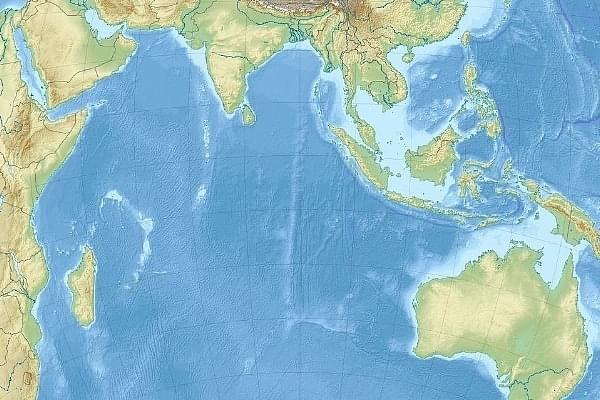Science
Indian Ocean's 'Gravity Anomaly': What Indian Researchers Have Discovered So Far
Abhay Rathore
Jul 25, 2023, 05:56 PM | Updated 05:56 PM IST
Save & read from anywhere!
Bookmark stories for easy access on any device or the Swarajya app.

What is the most commonly held idea that comes to mind when we speak of earth? Perhaps that it is a perfect sphere with gravity all around? But that is far from being true.
Our planet is actually flat at the poles and bulges at the equator. Furthermore, gravity is not consistent everywhere. One notable example is the presence of a massive 'gravity hole' in the Indian Ocean. Researchers have recently uncovered the reason behind this anomaly.
The strength of gravity in any given location is determined by the mass of the Earth's crust, mantle, and core beneath that specific region.
Interestingly, there is a significant area in the Indian Ocean, approximately 1,200 kilometre southwest of the southernmost tip of India, where gravity is remarkably low. Scientific American reports that the sea level over this "hole" is about 106 meters below the global average.
This distinctive depression in the ocean is referred to as the Indian Ocean geoid low (IOGL) that spreads over three million square kilometre.
It has confounded scientists because of the peculiar dip in sea level caused by gravitational forces near the Indian subcontinent. Upon investigating the Earth's internal structure, researchers found that the planet's gravitational field is uneven due to differences in density and mass distribution. The phenomenon was first discovered in 1948 by Dutch geophysicist Felix Andries Vening Meinesz during a survey.
Since then, it has been confirmed by other ship-based experiments and satellite measurements. However, scientists have struggled to determine the exact cause of this phenomenon. That is, until now.
In a recent research article published in the journal Geophysical Research Letters, Debanjan Pal and Attreyee Ghosh, researchers from the Indian Institute of Science (IISc) in Bengaluru, have documented their findings on the cause of this gravitational anomaly.
According to BBC, computer-simulated models of the past 140 million years have revealed the existence of an ancient ocean approximately 965 kilometres below the Earth's crust, directly beneath Africa.
In their simulations, researchers consistently observed molten rock plumes beneath Africa, possibly resulting from tectonic plates descending into the mantle. These plumes are believed to be a potential cause of IOGL.
However, as reported by New Scientist, there is currently no definitive seismic evidence confirming the presence of these plumes beneath the Indian Ocean. The researchers suggest that further investigation is necessary to uncover additional factors contributing to the observed dip before reaching a conclusive explanation.
Save & read from anywhere!
Bookmark stories for easy access on any device or the Swarajya app.
Support Swarajya's 50 Ground Reports Project & Sponsor A Story
Every general election Swarajya does a 50 ground reports project.
Aimed only at serious readers and those who appreciate the nuances of political undercurrents, the project provides a sense of India's electoral landscape. As you know, these reports are produced after considerable investment of travel, time and effort on the ground.
This time too we've kicked off the project in style and have covered over 30 constituencies already. If you're someone who appreciates such work and have enjoyed our coverage please consider sponsoring a ground report for just Rs 2999 to Rs 19,999 - it goes a long way in helping us produce more quality reportage.
You can also back this project by becoming a subscriber for as little as Rs 999 - so do click on this links and choose a plan that suits you and back us.
Click below to contribute.





